-
Posts
3,491 -
Joined
-
Last visited
-
Days Won
25
Content Type
Profiles
Forums
Blogs
Gallery
Events
Store
Posts posted by bigjarofwasps
-
-
As far as I know, any U.S. coin ever minted is still legally 'worth" its face value. Anyone foolish ebough to use one of these for a dollar these days would probably be met with baffled failure to recognize one, rather than a
"sure mister!
 " and replacement with the clerk's own paper dollar in the till.
" and replacement with the clerk's own paper dollar in the till.Mine went for what was then scrap buillion value to a coin dealer back then. Nothing rare or pristine. These coins CIRCULATED in their day
Our Beloved Gubamint has tried many attempts at dollar coins since, made out of the usual recycled tuna fish cans all coins are stamped out of these days. The GHASTLY Eisenhower dollar with lunar eagle reverse was the last in this big size. We've had so many clunkers since I've lost track, but they moved to smaller sizes--
easily confused
 with our 1/4 dollar coins, which all failed-- the hatchet-faced Susan B. Anthony dollar (another cousin of mine), and most recently the gold washed Sacajewea coin. (which nobody can even SPELL, me included, dohhh!!!!)
with our 1/4 dollar coins, which all failed-- the hatchet-faced Susan B. Anthony dollar (another cousin of mine), and most recently the gold washed Sacajewea coin. (which nobody can even SPELL, me included, dohhh!!!!)NOBODY WANTS THESE! Purportedly vending machines and casinos love them, but lugging around chests of tunafish can metal coins like merchants in 1342 is NOT what anybody normal wants to do going about daily life.
I do it for real silver, though.

Cheers Rick, that about answered my question, and was very amusing to boot!

 0
0 -
Rick,
Was thinking about what you said, re using your silver peace dollars, to get threw college, in the 70`s. When did they cease to be legal tender then, or did you use them as a sort of silver bullion investment type thing?
Gordon.

 0
0 -
-
Hi Guys,
Found this which I thought might be of interest. This guy was a British Marine attached to the US Marines. The article doesn`t mention it, but does anyone know if the US gave him a bravery medal as well? Would he of also be entitled to the US medal for Iraq?
Anyway he`s the story....
Colour Sergeant Matthew Tomlinson receives the Conspicuous Gallantry Cross in the Operational Honours List announced on 24 March 2006.
Colour Sergeant Tomlinson was commanding a US Marine Corps assault force on the Euphrates River near Fallujah in November 2004 when they came under fire from a numerically superior and well-defended enemy position. His decision to turn his lead craft towards the attack created an element of surprise, which unhinged the enemy. He was first on the river bank and he engaged in close quarter battle, enabling his men to encircle the enemy.
When it became clear the insurgents were reinforcing themselves, Colour Sergeant Tomlinson called for fire support on the enemy Rocket Propelled Grenade position and he planned and led a decisive assault on the key enemy position. On realising his force was running low on ammunition, Colour Sergeant Tomlinson executed a safe withdrawal to the river bank where he personally provided cover fire to ensure his men safely boarded the boats. He also marked his position so that air support could counter strike at the enemy force. The citation reads:
"Colour Sergeant Tomlinson's sure, aggressive and decisive actions throughout saved the lives of many in his US Marine Corps patrol. He displayed courage, determination, and remarkable presence of mind throughout and his actions were in keeping with the highest traditions of the Royal Marines."
Matthew Tomlinson ("Tommo") was born in Bridport on 6 December 1966 and grew up in Street, Somerset where he attended Crispin School.
He joined the Royal Marines in June 1989 and trained as a landing craft specialist. The majority of his career to date has been spent as a small boat coxswain with operational tours in Northern Ireland, Zaire, the Congo, Sierra Leone and Hong Kong before the handover. He also served in Afghanistan on the operations against the Taliban.
From 2003 to 2005 Colour Sergeant Tomlinson served on exchange with the United States Marine Corps, Small Boat Company at Camp Lejeune, North Carolina. During this time he deployed to Iraq to carry out operations on the Euphrates River around Fallujha.
Colour Sergeant Tomlinson is now serving with 1 Assault Group Royal Marines where he does research, development and trials on new landing craft and boats.
Married to Sharon they have 3 children, daughter Ellis and sons Harvey and Daniel-Brian.
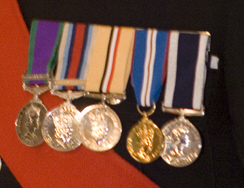
 0
0 -
-
First there is a gold mountain, then there is no mountain
Start with the biggest deposit of gold ever reported, in the headwaters of the Busang River in the steaming jungle of Borneo. The Canadian company Bre-X Minerals Ltd. didn't know about that when it bought rights to the site in 1993. But after Bre-X hired a high-living geologist to map the ore body, the deposit, along with the fever dreams that accompany gold, grew to monster size—by March 1997 that geologist was talking about a 200-million-ounce resource. You do the math at, say US$500 per ounce.
Bre-X prepared for big times ahead by building a gold-plated Web site, where you could generate your own Bre-X stock chart to follow its meteoric rise. It also had a chart showing the equally meteoric rise of the estimated gold resource: together, those two pages could infect anyone with gold fever.
Bigger mineral companies took notice. Some made takeover offers. So did the Indonesian government, in the person of president Suharto and his powerful family. Bre-X owned more of this lode than seemed prudent for such a small, inexperienced foreign firm. Suharto suggested that Bre-X share its fortunate surplus with the people of Indonesia and with Barrick, a firm tied to Suharto's ambitious daughter Siti Rukmana. (Barrick's advisors, among them George H. W. Bush and ex-prime minister of Canada Brian Mulroney, also favored this scheme.) Bre-X responded by enlisting Suharto's son Sigit Hardjojudanto on its side. An impasse loomed.
To end the contretemps, family friend Mohamad "Bob" Hasan stepped in to offer all sides a deal. The American firm Freeport-McMoRan Copper & Gold (led by another old Suharto friend) would run the mine, Indonesian interests would share the wealth, Bre-X would keep 45 percent of the ownership, and Hasan for his pains would accept a share possibly worth, oh, a billion or so. Asked what he was paying for this stake, Hasan said, "There is no payment, no nothing. It is a very clean deal." (You may hear a voice saying "Forget it, Jake. It's Indonesia-town.")
Trouble Arises
The deal was announced on 17 February 1997. Freeport went to Borneo to start its own due-diligence drilling. Suharto was ready to sign a contract after this step, locking in Bre-X's land rights for 30 years and starting the flood of gold.
But just four weeks later, Bre-X's geologist at Busang, Michael de Guzman, exited his helicopter (250 meters in the air at the time), an evident suicide. On March 26 Freeport reported that its due-diligence cores, drilled only a meter and a half from Bre-X's, showed "insignificant amounts of gold." The next day Bre-X stock lost almost all of its value.
Freeport brought more rock samples to its American headquarters under armed guard. Bre-X commissioned a review of Freeport's drilling; the review recommended more drilling. Another review focusing on the chemical assays caused Bre-X to clam up completely on 1 April, and Suharto's signature was postponed.
Bre-X blamed the Web. CEO David Walsh told a fawning Calgary Herald reporter that the meltdown began when scurrilous local rumors in Indonesia were "picked up by one of the ghost writers on the Internet on the chat page or whatever."
Further reviews took the rest of April. Meanwhile, disquieting details began to arise. Industry journalists soon found evidence that the Busang ore samples had been "salted" with gold dust.
Salting of the Earth
On Friday 11 April, Northern Miner magazine put a "news flash" on its Web site laying out three lines of evidence that Bre-X had been duped.
First, contrary to company statements, Busang core samples had been prepared for assay in the jungle, not in the testing lab. Videotape made by a visitor to the field site showed the humble machines common in assay labs—hammer mills, crushers, and sample splitters. Well-labeled sample bags clearly had finely crushed ore in them. Security was lax enough that samples could easily have been spiked with gold.
Second, the local inhabitants had begun panning for gold in the Busang River, but in two years they never found any. Yet Bre-X claimed that gold was visible, a sign of unusually rich ore. And de Guzman's technical report, confusingly, called the gold submicroscopic, which is typical of hard-rock gold ore.
Third, the assayer that tested the samples said the gold was predominantly in visible-sized grains. Also, the grains showed signs consistent with being typical river-panned gold dust, such as rounded outlines and rims depleted in silver. The assayer dodged the 64-billion-dollar question, saying that there were indeed ways for hard-rock gold grains to acquire rounded edges—but that argument was a fig leaf.
The Curtain Falls
Meanwhile a storm of securities lawsuits arose around Bre-X, which vigorously protested the whole unfortunate series of misunderstandings. But it was too late. The collapse of Bre-X cast a cloud over the gold mining industry that lasted into the next century.
David Walsh decamped to the Bahamas, where he died of an aneurysm in 1998. Bre-X's chief geologist, John Felderhof, eventually went on trial in Canada but was acquitted of securities fraud in July 2007. Apparently in selling part of his stock holdings for $84 million in the months before the scandal hit he had not been criminal, just too stupid to catch the fraud.
0 -
Two soldiers are in line to receive the Victoria Cross for their actions in fighting the Taliban in Afghanistan, it has emerged.
The first is L/Cpl Oliver "Teddy" Ruecker from the 1st Battalion the Royal Anglian Regiment, who is believed to have been recommended for Britain's highest award for gallantry by his commanding officer.
During a fierce fire-fight in Helmand province in May, the 20-year-old ran back to pull his critically injured friend from a burning armoured vehicle that contained plastic explosives.
Capt David Hicks, 26, is also believed to be in line for the award.
He died hours after being wounded and refusing morphine so he could lead a counter-offensive of 50 men against a rocket position.
Their actions bring into sharp focus the intensity of fighting in southern Afghanistan, which has prompted calls for a special clasp to accompany the country campaign medal in recognition of the heightened dangers faced by troops serving there.
Should the pair be awarded the Victoria Cross, it would be the first time two soldiers from the same battalion had been awarded the medal since the Korean War.
The 650-strong 1st Battalion has suffered the heaviest fatalities in the Army in Afghanistan this year, losing nine soldiers since April. L/Cpl Ruecker - who is still serving in Afghanistan - would be only the second living recipient of the medal since 1969, the other being Pte Johnson Beharry of the Princess of Wales's Royal Regiment in 2005.
However, the final decision rests with a committee of serving and retired generals, which will rule later this year or early in 2008.
The MoD refused to confirm the nominations, saying speculation risked raising expectations that were not always realised.
Capt Hicks's father, Alun, said that he had received "no information" on the matter.
He said: "Awards are appropriate for the system but nothing can bring David back.
"As far as we in the family are concerned he is a hero for what he did on August 11."
0 -
"I once had a six foot long mailing tube for ping pong balls full of these. All but a handful went for college in the 1970s, sigh."
What a nice story.
But be honest how many of them were turned into beer?



 0
0 -
The above relates to this medal, found on Ebay
Northern Ireland CSM Medal Colman Fusiliers Decorated!!
GOC NI Commendation IRA Bomb Attack 1st May 1992 Item number: 190145462976

 0
0 -
An outstanding Northern Ireland General Officer Commanding Commendation Campaign Service Medal awarded to Fusilier G.A. Colman, A Company, 2nd Battalion, Royal Regiment of Fusiliers, who was decorated for the IRA attack the Permanent Vehicle Check Point (PVCP) Romeo One Five on the 1st May 1992, when the Irish Republican Army launched one of its most sophisticated bomb attacks during the conflict. Fusilier Andrew Grundy was killed in the incident. Campaign Service Medal, 1 Clasp: Northern Ireland, with oakleaf on ribbon representing the award of the General Officer Commanding’s Commendation for Northern Ireland, named to: (24863595 FUS G A COLMAN RRF). Mounted loose style on wearing pin.
With a publication of the Royal Regiment of Fusiliers journal ‘The Fusilier’, Volume 7 Number 4, for December 1993. Page 370 shows the lists of Honours and Awards’ with Fusilier Colman’s name shown for the GOC Northern Ireland Commendation, he was serving with the 2nd Battalion at the time.
Fusilier G.A. Colman served with the 2nd Battalion, and his service number indicates that he joined up in 1987, into the Royal Regiment of Fusiliers. In 1991 following their five year commitment to the ACE Mobile Force Land, the 2nd Battalion began a two year tour of Northern Ireland in the same area as where the Battalion had first exercised after their formation in 1968. Based at Abercorn Barracks in Ballykinler, the 2nd Battalion arrived in theatre during late July 1991 as the resident regular battalion of 3rd Brigade which was tasked with the security of the Border region. Colman would have taken part in Operation ‘Bronski’ the construction and refurbishment of the Golf and Romeo OP Towers in South Armagh. This tour eventually became one of the longest tours ever staged by a battalion in NI, at 31 months. It was the Regiment’s 30th tour of Ulster during the troubles, and became one full of incidents. The most serious was the destruction of PVCP (Permanent Vehicle Check Point) Romeo One Five on 1st May 1992, one of the most sophisticated bomb attacks by the IRA throughout the conflict, and the one for which Colman would be decorated with his G.O.C.’s NI Commendation.
The following details of the incident are taken from the regimental history of the Royal Fusiliers “For England and St George”.
Romeo One Five was situated at Killeen, south of Newry on the main Belfast to Dublin road. The PVCP (Permanent Vehicle Check Point) had been first destroyed in 1990 by a proxy bomb driven to the site by an innocent civilian whose family had been kidnapped and threatened with death if he did not comply. Ranger Cyril Smith of the Royal Irish Rangers died instantly in the explosion. Romeo One Five was built in its place, but this time it was protected by armoured blast walls against proxy bombs and incorporated a hardened shelter for the troops, known as the ‘submarine’. After careful examination from afar, the IRA had discovered a chink in its armour. R15 was armoured on three sides facing the A1 Road. The fact that the railway side was unprotected had been realised and work was in hand to rectify the failing. As part of the contingency planning, the base was to be evacuated when the threat level reached a certain level. At this point, the platoon would disperse into preordained positions in the surrounding hills, leaving only a few people in the control sangar to coordinate matters. The threat level had almost been reached but there was pressure from on high not to evacuate the base. During the night of 30th April, an IRA ASU hijacked a JCB mechanical digger and drove it to Killeen bridge where the A1 passes over the Belfast to Dublin railway line, just inside the Northern Ireland border. After knocking down a wall and preparing an access ramp, the JCB lifted the Renault Master van on to the railway line. The tyres of the van had been removed and it had been fitted with an extra set of wheels so as to run on the tracks; it also contained one ton of homemade explosives. The courtesy light was switched on and second gear was engaged. The van started trundling north towards Newry with 1800 metres of command wire spooling out of the back. At the same time IRA teams set up road blocks north and south of R15 to stop civilian vehicles from approaching the PVCP. At R15 the guard at the rear sangar overlooking the railway line had just changed and Fusilier Andrew Grundy had relieved his close friend Michael Beswick. Most of the Fusiliers were asleep in the ‘submarine’. Shortly after 0200 hours, a Fusilier in R14, a hilltop OP overlooking the PCVP, noticed a light moving northwards along the railway line and sent a message by radio stating ‘A car is driving down the railway line’. He made the transmission twice on the company net but was met with disbelief. At the rear of the PVCP, Fusilier Grundy heard the warning and was leaning out of the sangar when he saw it approaching. He immediately realised the danger and shouted over the intercom - ‘Proxy bomb - rear gate!’ He then brought his rifle to bear to try to disrupt the device with gun fire. A third person was also watching the approach van and when he saw the telltale curtesy light draw abreast of R15, he radioed his accomplice at the end of the command wire. One kilometre south of the PVCP multiples from 3 Platoon under the command of Lieutenant Peter Allanach were on patrol when they were approached by a civilian who told them that his car had been stopped by hooded men telling him to avoid R15. Lieutenant ‘Zippy’ Allanach radioed a warning and then 3 Platoon began running towards the PCVP. At 0205 hours, the bomb detonated on the only unprotected side of the PVCP. The explosion uprooted the 10 ton rear sangar and propelled it a distance of some then metres. Inside, Fusilier Grundy was killed instantly by the blast. The first report to be received by battalion headquarters was from 3 Platoon which stated - ‘Contact now at R15. Major explosion’. The next report was even more dire - Contact R15 bombing. There are mass casualties - the submarine has gone!’. There were 24 soldiers in the ‘submarine’ and this report precipitated numerous offers of assistance over the battalion net.
The commander of the platoon manning R15 , Lieutenant Andrew Rawding then emerged from the debris, with blood running down his face and his rifle destroyed, and ascertained that the casualties were not severe. The ‘submarine’ had survived intact and all those inside had not been harmed, indeed many had slept through the explosion. The uninjured Fusiliers were deployed on the high ground around the site in case of a follow up attack by the IRA. None was forthcoming. Cpl Tom Sayers of 1 Platoon A Company was asleep at the time, having just returned from patrol but was still dressed for action. ‘I was asleep in my pit and the next thing I knew was waking up with the roof on top of me as the whole portacabin had collapsed. There were two other people in the room with me – Fusilier ‘Evo’ Evans and Cpl ‘Stan’ Boardman. Outside were the rest of the multiple in a hardened shelter. It was pitch black so I scrabbled around for my weapon, helmet and webbing. I got the radio out to send a contact report but the cryptic had been damaged so it didn’t work. I then shouted out “Stan! Evo! Are you alright?” as I hadn’t heard anything. Evo said, “I can’t feel my legs”. Stan said “My head’s bleeding”. So I moved to Stan but he seemed OK and then to Evo thinking Oh God what am I going to find here but it was only the GPMG lying on his legs. We eventually got outside and got the teams out of their cut-off positions to stop anything or anyone coming in. My next task was to find out how many casualties there were. I went to find Sergeant Major ‘Patch’ Ai but couldn’t find him in his portacabin so I went to the hardened shelter, opened the door and there was ‘Patch’ standing stark bollock naked with cuts all over him, going into shock. The Medic, Fusilier ‘Brewkit’ Brewer was sorting through his bed bunk so I said to him. “What are you doing?” and he replied “I’m trying to find him a pair of underpants.” I told him, “He’s going into shock – get the blanket off the bed, wrap him in it, and get him sorted.” Lieutenant Rawding was on the net calling for the helicopter evacuation of the casualties to Newry hospital. Cpl Sayers then located Fusilier Grundy in the sangar which had been blown up ‘there was Grundy – not a mark on him.’ I called over four Fusiliers and we placed him on the door. Now the helipad was on the top of a steep hill so it was quite a struggle to get him up there, but there was no hassle no arguments – straight up to the top. The Lynx arrived and the Doc flew back with the body to Newry, Grundy was pronounced dead on arrival. It is believed that Colman was one of those who bravely took part in the evacuation of Grundy, throughout under the threat of further attack by the IRA, though the specific details behind his GOC NI Commendation are not known, it was awarded for this incident, but for what exactly we are not sure.
After Grundy’s body was evacuated, the OC A Company arrived, Major James Murray-Playfair surveyed the scene of destruction and promptly took one of the NAAFI cigarettes lying around after the explosion, It was the first one he had smoked in ten years.
0 -
-
0
-
A few more articles...
http://www.mirror.co.uk/news/topstories/20...89520-19713494/
http://www.mirror.co.uk/news/topstories/20...89520-19696087/
I emailed the reporter about this Medal campaign, and as yet not surprisingly I haven`t had a reply. The more I think about it, the less likely I can see the Government or the M.O.D going for it, but as C3PO said about R2D2, "He has been known to be wrong from time to time".
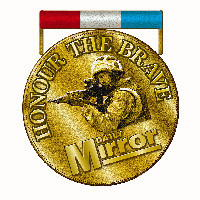


 0
0 -
Found this, thought it might be of inerest........
The Pittman Act was a United States federal law sponsored by Senator Key Pittman of Nevada and enacted on April 23, 1919. The act authorized the conversion of not exceeding 350,000,000 standard silver dollars into bullion and its sale, or use for subsidiary silver coinage, and directed purchase of domestic silver for recoinage of a like number of dollars. Under the Act, 270,232,722 standard silver dollars were converted into bullion (259,121,554 for sale to Great Britain at $1.00 per fine ounce, plus mint charges, and 11,111,168 for subsidiary silver coinage), the equivalent of about 209,000,000 fine ounces of silver. Between 1920 and 1933, under the Act, the same quantity of silver was purchased from the output of American mines, at a fixed price of $1 per ounce, from which 270,232,722 standard silver dollars were recoined.
Further provisions relating to silver coinage were contained in the Thomas Amendment to the Agricultural Adjustment Act of 1933.
0 -
-
Gunner Robert Curtis becomes the first British soldier to die in Northern Ireland 06/02/1971
Shot by sniper while on British Army foot patrol, New Lodge Road, Belfast.
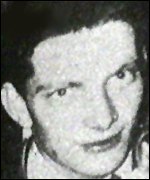
 0
0 -
1972 was the bloodiest year of the conflict with 134 soldiers being killed.
I believe that a total of 720 British soldiers, were killed during the conflict.
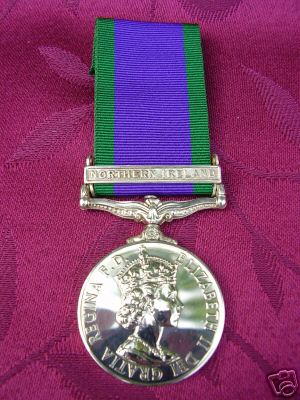
 0
0 -
L/Bdr Restorick was shot in the back by a sniper at an army checkpoint in Bessbrook, County Armagh, in February 1997.
L/Bdr Restorick, was the last British soldier to be killed in action, during Op Banner.
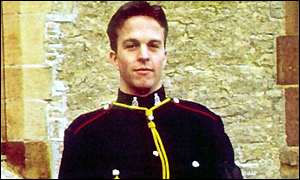
 0
0 -
The total number of UK troops killed while on operations in Afghanistan since 2001 has risen to 73 after the deaths of three soldiers in Helmand province on 24 August 2007.
Three British soldiers were killed in a "friendly fire" incident involving US military aircraft while on operations in Helmand province in southern Afghanistan on 24 August.
Privates Aaron McClure, Robert Foster and John Thrumble from 1st Battalion The Royal Anglian Regiment were on a patrol near Kajaki when they came under Taleban fire.
The MoD says events surrounding the deaths are under investigation
Two US F15 fighters were called in to provide close air support, when a bomb from one of the aircraft struck the compound the three men and their platoon were in.
Lieutenant Colonel Stuart Carver, Commanding Officer 1st Battalion the Royal Anglian Regiment, said Pte McClure, 19, from Ipswich,"was already a veteran of over forty engagements with the enemy. It is tragic that where the Taliban had failed, it was an accident that has taken him from us."
Lt Col Carver described Pte Thrumble, 21, from Chelmsford, Essex, as "proven in combat on countless occasions - his raw courage and ability to raise a smile were invaluable in these testing times".
Of Pte Foster, aged 19 and from Harlow in Essex, Lt Col Carver said: "Fiercely loyal to his friends, he had seemingly limitless reserves of courage and strength of character way beyond his years."
http://news.bbc.co.uk/1/hi/uk/6963767.stm

 0
0 -
Something to do with the US war effort during WW1?
In those days they weren`t the super power that they are today!
Whatever the Pittman Act was, the old Morgan dollar certainly bore the brunt of it.
Now theres a new thread....Morgan Dollars, leave it with me!
0 -
The more I think about it the more it becomes less likley that the government would create such an award. Nice idea as it is theres just to many variables!!!
However, theres more....
http://www.mirror.co.uk/news/topstories/20...89520-19665928/
0 -
How many CSM NI's will that be - somewhere around 1/4 million or more with about 30,000 Acumulated CSM's?
Badly positioned badge on that Welsh Guardsman's beret - overlapping the band.
How many CSM NI's will that be - somewhere around 1/4 million or more with about 30,000 Acumulated CSM's?
Must be if not more!!!!!!
Badly positioned badge on that Welsh Guardsman's beret - overlapping the band.
 Well spotted..."Get him awayyyyyyyyy!!!!!"0
Well spotted..."Get him awayyyyyyyyy!!!!!"0 -
Okey so the common theme here is no, and some good arguments to back it all up.
The going back to 1946 point, the cost of that alone doesn`t bear thinking about.
The better medical care instead, yes I can see your point, but the way the whole funding system works, means that money from one dept can not be passed over to another no matter how good the cause. Just ask your local council about that!!!
Lets not forget that a vast majority of the wounded service personal, are MD from the forces, I think a medal to recognise there wounds is a good thing.
It doesn`t have to cost a great deal (just look at the Purple Heart) for that, but if it ever materalises lets hope its tastful!!
Well thats me off my soap box.
Surely there must be some positive views out there, as it stands its not looking very good for the Mirror!!
0 -
Hi Guys,
Don`t know if you guys are aware or not of this currently running campaign by the Daily Mirror (I`m not a reader, just happened acrosss it by chance), but thought it might be of interest.....
http://www.mirror.co.uk/news/topstories/20...89520-19685975/
http://www.mirror.co.uk/news/topstories/20...89520-19680426/
http://www.mirror.co.uk/news/topstories/20...89520-19649477/
http://www.mirror.co.uk/news/topstories/20...89520-19631725/
I`d very much like to hear your views on this....
Gordon.
0




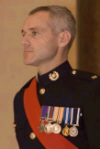

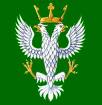


Furst Bismarck Medallion
in Coins & Commemorative Medallions
Posted
Don`t know I`m afraid, but if I may comment, what a well struck coin! Any idea where the church is? It looks very much like the one my wife & I got engaged in the grounds of. That one is in Bergan North Germany.